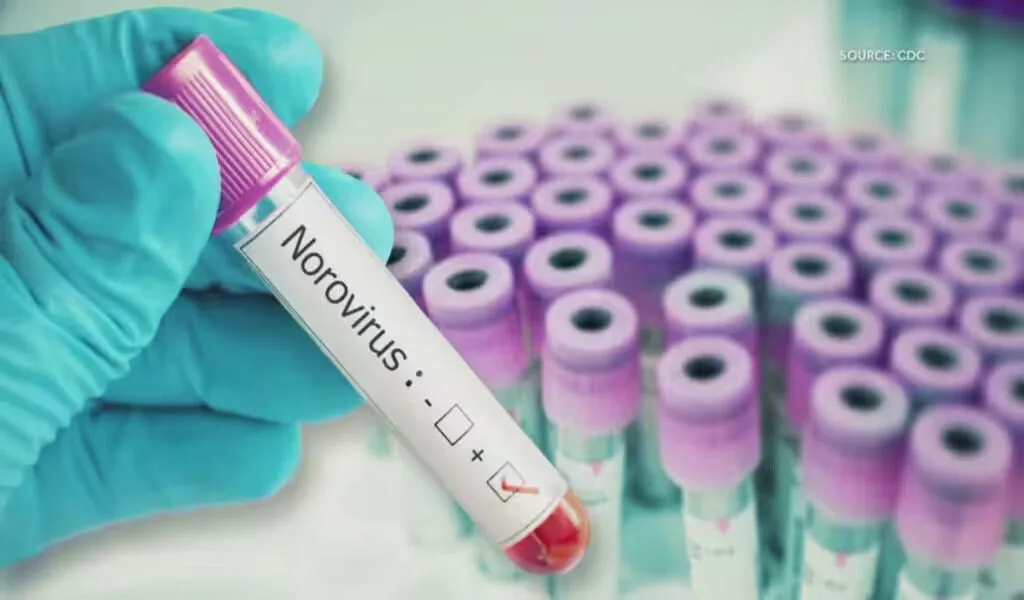Health
US Norovirus Cases Surge. Here’s What You Need to Know

(VOR News) – The U.S. Centers for Disease Control and Prevention documented 91 instances of norovirus in the week of December 5. There were 69 incidents of breakout relative to the final week of November.
Here is all the pertinent information regarding the rising incidence cases in various regions of the United States:
What is norovirus?
Noroviruses are a category of viruses that induce acute gastroenteritis, characterized by inflammation of the stomach or intestines. It is the principal cause of diarrhea, emesis, and foodborne diseases in the United States.
The CDC estimates approximately 2,500 outbreaks occur annually in the United States. While epidemics transpire year-round, they are predominantly observed from November to April.
Despite being termed the “stomach flu,” it is not associated with the influenza virus. The influenza virus causes the flu, a respiratory ailment.
What symptoms indicate norovirus infection?
Symptoms of norovirus exposure generally manifest between 12 to 48 hours.
The predominant symptoms are as follows:
Undergoing diarrhea
Experiencing queasiness
I experience nausea.
abdominal pain
Additional symptoms encompass cephalalgia, myalgia, and pyrexia.
Individuals infected may experience diarrhea, persistent vomiting, or significant illness. Symptoms may result in dehydration, particularly in young children, the elderly, and individuals with preexisting health conditions.
Dehydration may present with the following symptoms:
Reduced urination
Xerostomia with pharyngitis
Dizziness when standing Crying without producing significant tears
Unusual irritability or lethargy
What is the duration of the symptoms?
Individuals may transmit the sickness for several days post-recovery, despite the fact that the majority recuperate within one to three days.
Strategies for managing norovirus
No specific medication exists for the treatment of norovirus.
Antibiotics are ineffective in treating infections.
To replenish fluids lost due to vomiting and diarrhea, consume plenty liquids and monitor for indications of dehydration. Sports drinks and other non-alcoholic beverages containing caffeine may assist in alleviating mild dehydration; nevertheless, over-the-counter oral rehydration solutions are the most efficacious.
If the afflicted individual gets severely dehydrated, seek medical assistance for treatment.
What is the mode of transmission for norovirus?
The majority of epidemics arise directly from infected individuals transmitting the illness to others.
The disseminates rapidly. Medical specialists assert that even ten viral particles are sufficient to cause sickness.
An infected individual can transmit for a minimum of two weeks following their recovery.
Norovirus may be present in vomit or feces prior to the onset of illness. Moreover, for a minimum of two weeks post-recovery, the virus may remain detectable in your feces.
In the United States, predominantly causes outbreaks of food contamination. CDC estimates indicate that around fifty percent of all foodborne illness outbreaks are attributed to norovirus. The majority of these outbreaks transpire in food service environments, such as restaurants, where food employees manipulate ready-to-eat items with their bare hands prior to serving.
Leafy greens, shellfish, and fresh fruits are frequently associated with norovirus outbreaks.
It is predominantly seen in healthcare institutions, including hospitals and long-term care homes. Over fifty percent of all reported outbreaks in the United States transpire in long-term care institutions.
The virus can infiltrate healthcare institutions via contaminated food, sick patients, personnel, or visitors. Outbreaks in healthcare environments may persist for several months. Norovirus infections can be more severe and occasionally fatal for those in hospitals or long-term care facilities.
Moreover, daycare facilities, schools, colleges, universities, and cruise ships are often afflicted by the virus. Norovirus outbreaks on cruise liners represent about 1% of all documented incidents, however they are the predominant source of diarrheal illness epidemics aboard these vessels.
Methods to avert norovirus infection
Thorough handwashing and additional precautions can diminish the likelihood of contracting and disseminating norovirus.
Hands must be consistently and thoroughly cleansed with soap and water. Wash for a minimum of 20 seconds prior to handling, preparing, or consuming food, following diaper changes or restroom use, and before administering medication to oneself or others.
The CDC states that hand sanitizer is ineffective against norovirus. While hand cleansing must not be overlooked, hand sanitizers may be utilized as a supplementary measure to hand washing.
Noroviruses remain viable at temperatures up to 145 degrees Fahrenheit.
The CDC recommends implementing the following measures to inhibit the transmission of norovirus:
Ensure the seafood is thoroughly cooked and cleanse the fruits and veggies.
Cleaning and disinfecting polluted surfaces is essential.
Clean your things in hot water.
Once your symptoms diminish, stay at home for two days (48 hours) if you are unwell.
Despite the significant transmissibility, there are measures you can do to prevent its spread.
To mitigate norovirus, thoroughly cleanse your hands with soap and water rather than use hand sanitizer.
Avoid handling food, preparing meals, or caring for others when unwell.
SOURCE: CD
SEE ALSO:
India Alleges Colleges in Canada Linked to Human Trafficking
Canada’s Conservatives Plan for Jan 30th Non-Confidence Vote